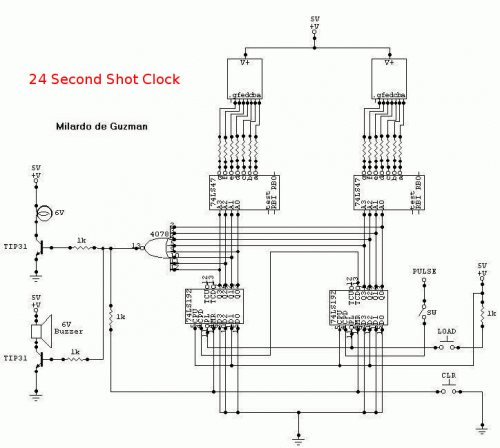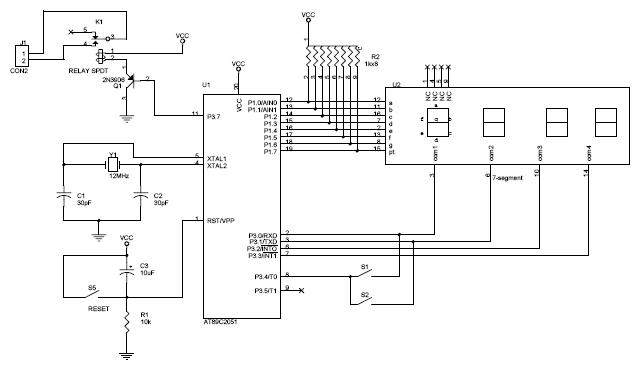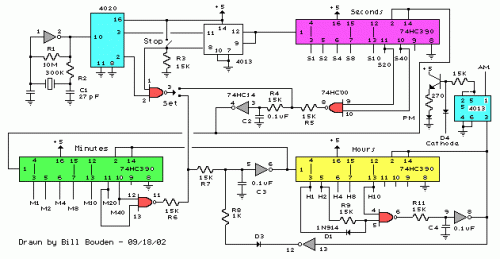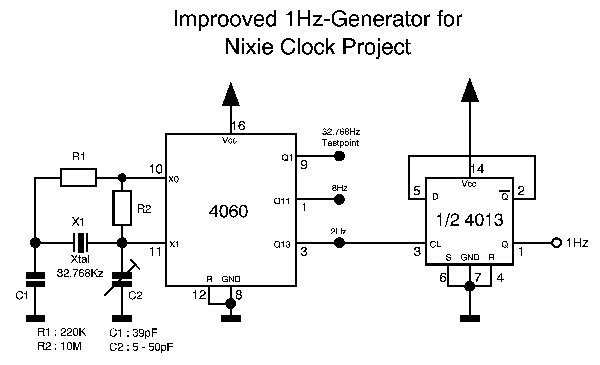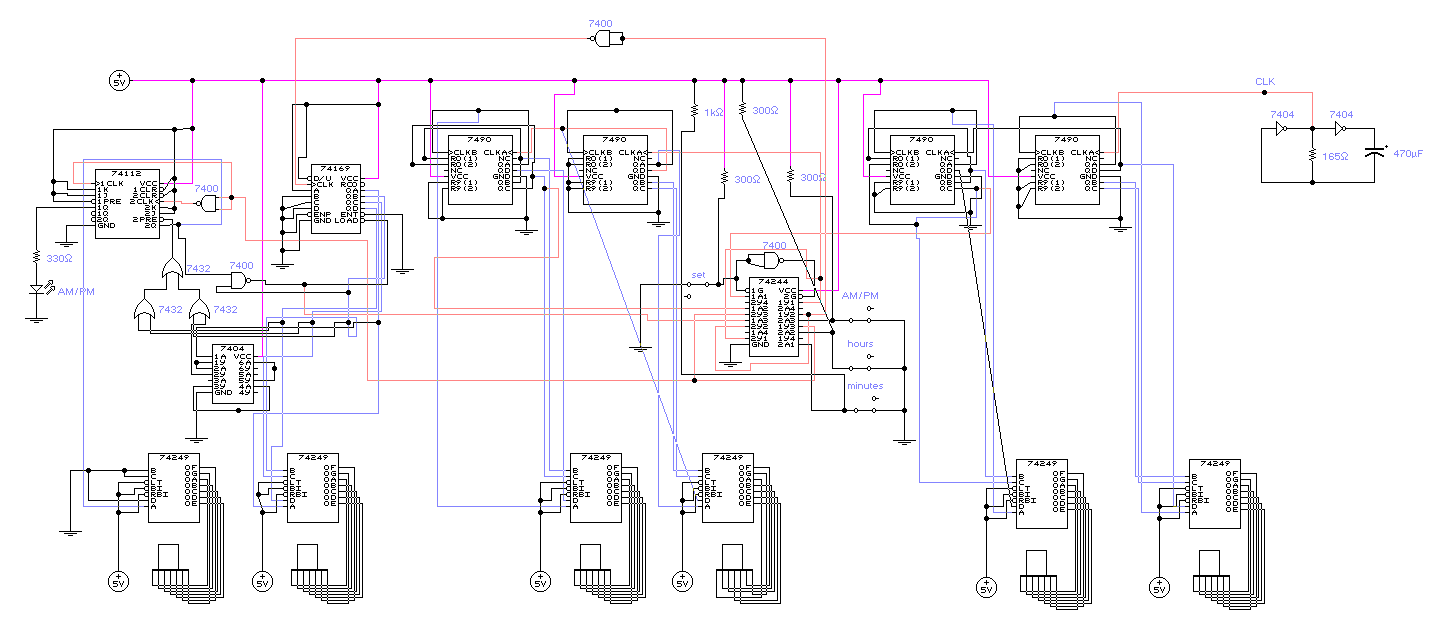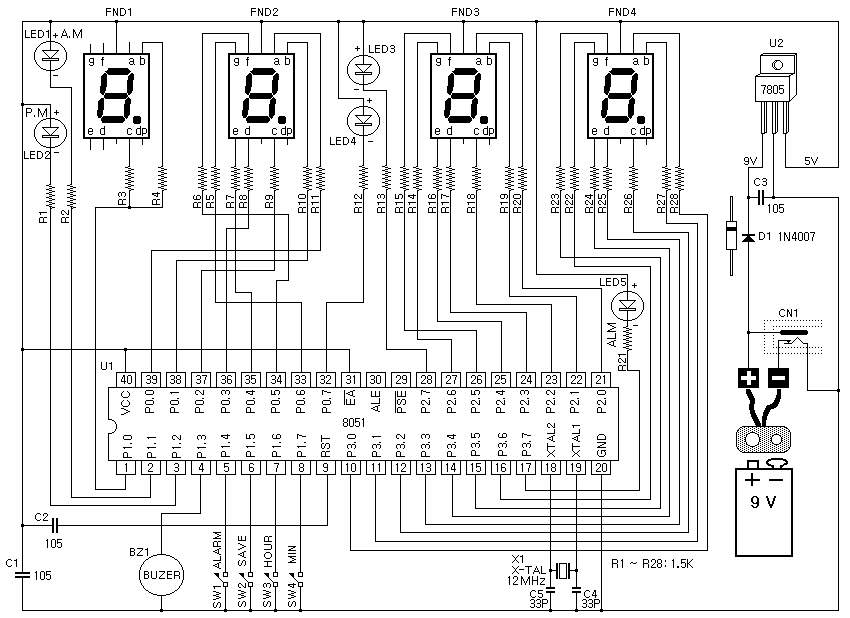
Nocrotec X2000 Numitron Clock
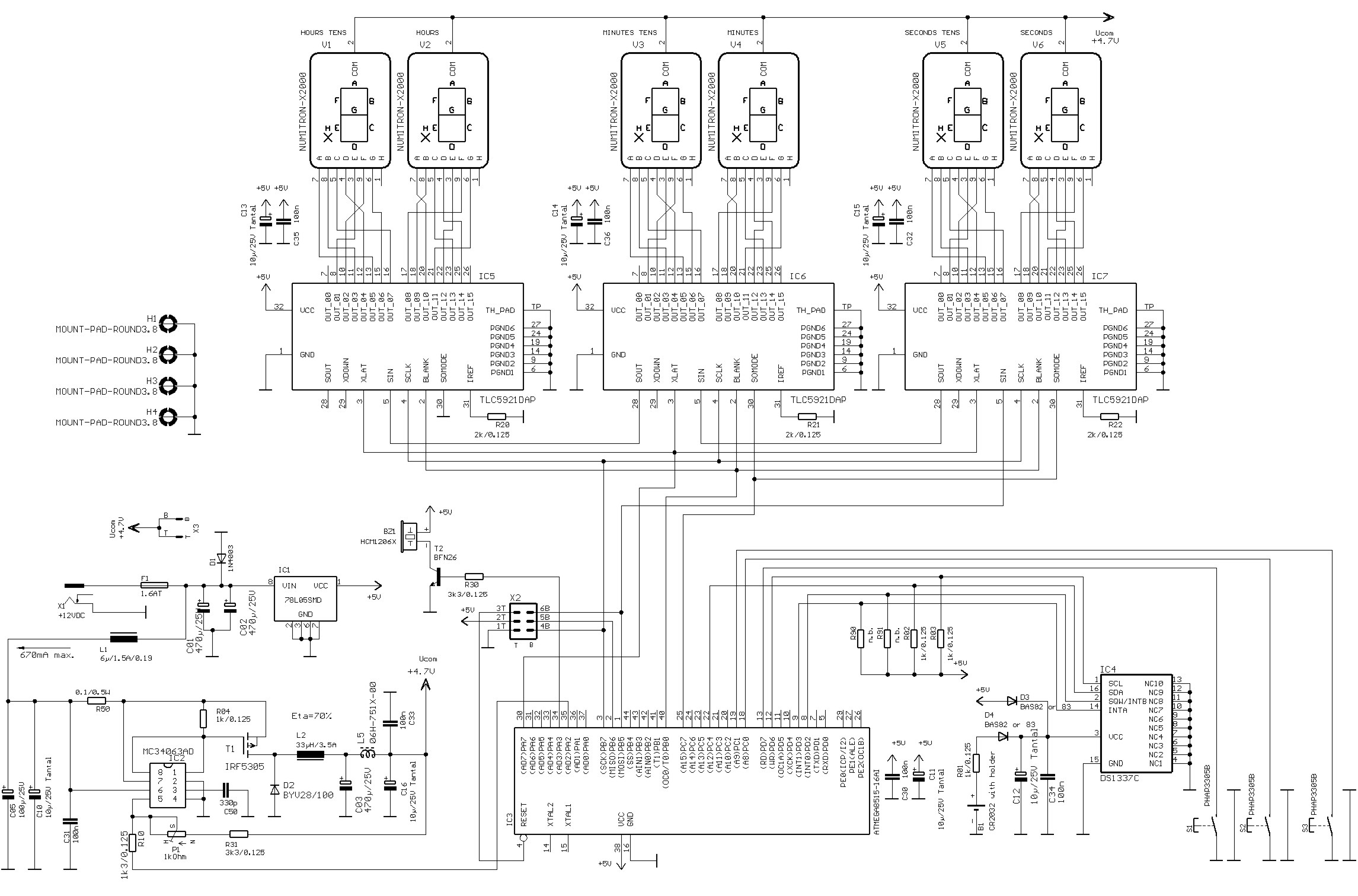
Numitrons are display devices similar to Nixie tubes, specifically designed for low voltage applications. They function as incandescent displays, utilizing filaments for the segments. A typical seven-segment readout comprises seven narrow illuminated bars arranged to create a rectangular figure resembling the number 8. As the corresponding logic circuits ascertain the numerical value to be displayed, the relevant bars are illuminated to form the numeral on the display surface.
Numitrons operate by using a low-voltage power supply, typically ranging from 1.5V to 6V, making them suitable for battery-operated devices. Each segment of the display is a filament that glows when an electric current passes through it, providing a warm, incandescent light. The segments are arranged in a specific configuration to represent the digits 0 through 9, as well as some alphanumeric characters, depending on the design of the Numitron.
The control mechanism for a Numitron display involves a series of logic circuits that interpret input signals, often generated by a microcontroller or digital logic circuit. These circuits activate the appropriate segments by supplying current to the corresponding filaments. The logic can be implemented using simple transistor switches or more complex integrated circuits, depending on the application requirements.
In terms of application, Numitrons are often used in clocks, calculators, and various electronic instruments where a numerical display is needed. Their low power consumption and unique aesthetic appeal contribute to their ongoing use in retro-style devices and custom electronics projects. In addition, the warm glow of Numitrons provides a distinct visual characteristic that differentiates them from modern LED displays, making them an attractive choice for specific design aesthetics.
Overall, the integration of Numitrons in electronic circuits requires careful consideration of the driving voltage, current limiting resistors, and the logic circuitry that controls the segment illumination. Properly designed, Numitron displays can offer an engaging and functional interface for various electronic applications.Numitrons are neat display devices similar to Nixie tubes, but they were designed for low voltage use. Numitrons are basically incandescent displays, using filaments for the segments. Basically, a seven-segment readout consists of seven narrow illuminated bars arranged to form a rectangular figure 8.
As the associated logic circuits determine thenumerical value to be displayed, the appropriate bars are illuminated to form the numeral on the display plane. 🔗 External reference
Numitrons operate by using a low-voltage power supply, typically ranging from 1.5V to 6V, making them suitable for battery-operated devices. Each segment of the display is a filament that glows when an electric current passes through it, providing a warm, incandescent light. The segments are arranged in a specific configuration to represent the digits 0 through 9, as well as some alphanumeric characters, depending on the design of the Numitron.
The control mechanism for a Numitron display involves a series of logic circuits that interpret input signals, often generated by a microcontroller or digital logic circuit. These circuits activate the appropriate segments by supplying current to the corresponding filaments. The logic can be implemented using simple transistor switches or more complex integrated circuits, depending on the application requirements.
In terms of application, Numitrons are often used in clocks, calculators, and various electronic instruments where a numerical display is needed. Their low power consumption and unique aesthetic appeal contribute to their ongoing use in retro-style devices and custom electronics projects. In addition, the warm glow of Numitrons provides a distinct visual characteristic that differentiates them from modern LED displays, making them an attractive choice for specific design aesthetics.
Overall, the integration of Numitrons in electronic circuits requires careful consideration of the driving voltage, current limiting resistors, and the logic circuitry that controls the segment illumination. Properly designed, Numitron displays can offer an engaging and functional interface for various electronic applications.Numitrons are neat display devices similar to Nixie tubes, but they were designed for low voltage use. Numitrons are basically incandescent displays, using filaments for the segments. Basically, a seven-segment readout consists of seven narrow illuminated bars arranged to form a rectangular figure 8.
As the associated logic circuits determine thenumerical value to be displayed, the appropriate bars are illuminated to form the numeral on the display plane. 🔗 External reference
